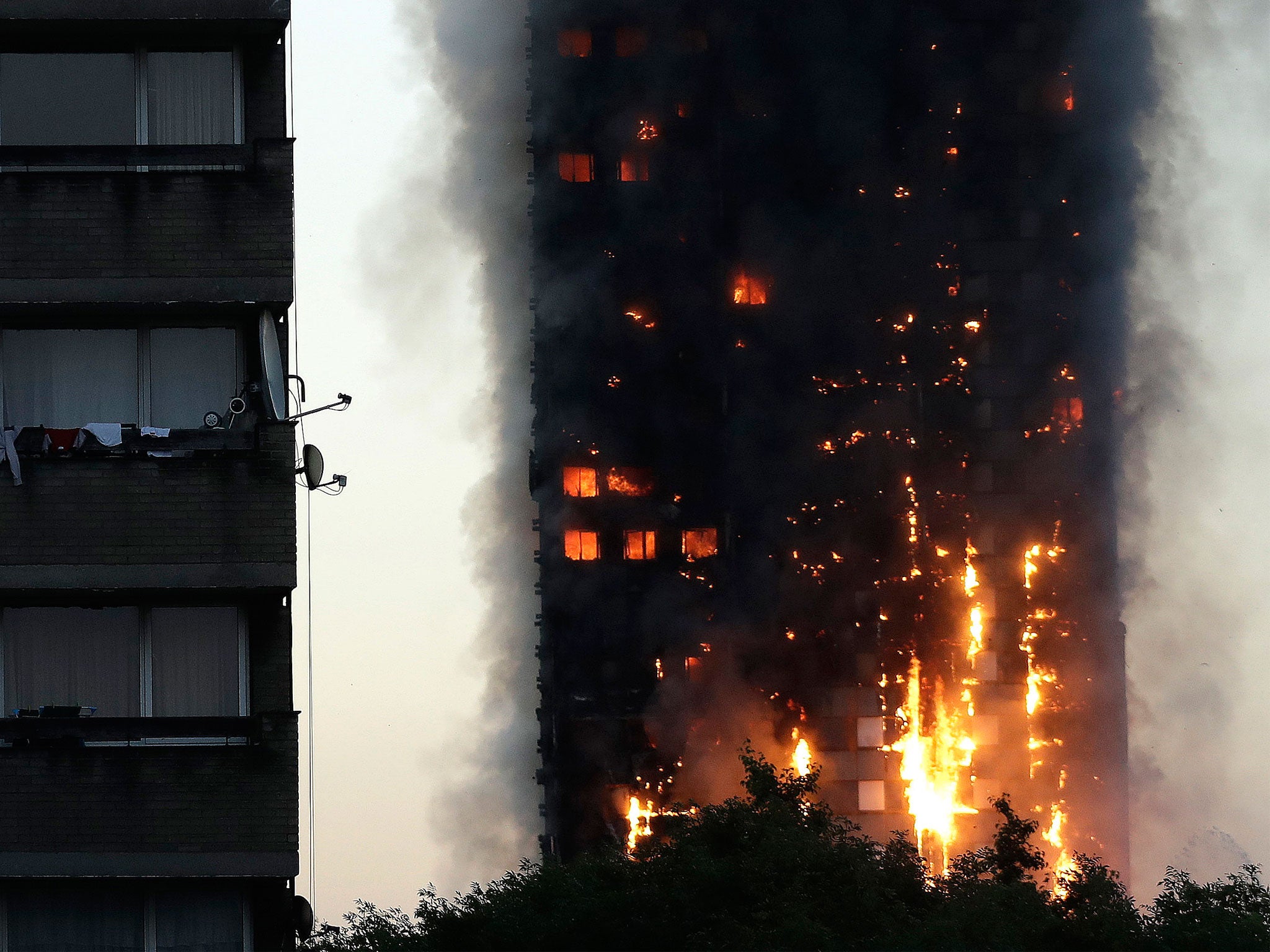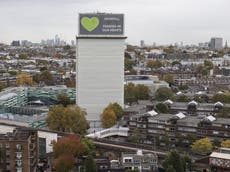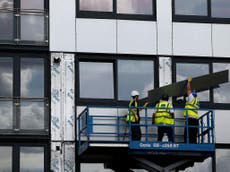Will £3.5bn be enough to fix thousands of unsafe buildings? Nowhere near it, say experts
Much more needs to be done to prevent another Grenfell and free millions of people trapped in homes they can’t sell – fire safety experts know it, residents know it and the government knows it writes Ben Chapman


Your support helps us to tell the story
From reproductive rights to climate change to Big Tech, The Independent is on the ground when the story is developing. Whether it's investigating the financials of Elon Musk's pro-Trump PAC or producing our latest documentary, 'The A Word', which shines a light on the American women fighting for reproductive rights, we know how important it is to parse out the facts from the messaging.
At such a critical moment in US history, we need reporters on the ground. Your donation allows us to keep sending journalists to speak to both sides of the story.
The Independent is trusted by Americans across the entire political spectrum. And unlike many other quality news outlets, we choose not to lock Americans out of our reporting and analysis with paywalls. We believe quality journalism should be available to everyone, paid for by those who can afford it.
Your support makes all the difference.The £3.5bn in government funding announced today to remove flammable cladding falls far short of what is needed to fix Britain’s building safety crisis and prevent another Grenfell Tower tragedy.
That is the near-universal view of building safety experts who believe that ministers know they will have to find substantially more money but are afraid to acknowledge the full scale of the problem.
Robert Jenrick, the housing secretary, has announced funding only to fix dangerous cladding on buildings taller than 18 metres, even though there are many more below this level that could go up in flames. People in those blocks will have to take out loans to make them safe, although the government says costs for cladding will be capped at £50 per month per flat.
There will also be a levy and on housebuilders that’s expected to bring in £2bn over 10 years as well as a separate tax on the industry. Which begs the question: where will the rest of the money come from?
A Commons select committee report last year put the cost of fixing only the tallest buildings at £15bn. Fire safety consultant Steve Mackenzie thinks the total bill could rise to as high as £100bn – about the size of the entire annual output of the UK construction sector. Other experts have suggested £30bn might cover it.
The minister’s statement to the Commons focused entirely on removing flammable cladding, even though a host of other fire risks have now been been exposed. There is no option but to fix all of these issues or to bear responsibility for another avoidable tragedy. As things stand, homeowners are still on the hook.
Mr Jenrick did not address the fact that insurance costs have soared for residents, or that many have already been declared bankrupt and he did not lay out a plan for how to get the housing market running when millions of flats remain unsellable.
The £3.5bn of extra funding is “a drop in the ocean” according to Phil Murphy, an independent high-rise safety expert.
He says the figure is “completely arbitrary” because the government still does not know how many buildings may be unsafe.
Work is under way to establish a reasonable estimate but it won’t be complete until the end of the year – four and a half years after Grenfell.
“There’s a tax for future buildings and there’s government money, both of which I agree with,” says Mr Murphy. “But the main people that caused it, the construction companies and building materials companies, are going to walk away.”
Some building firms that are not responsible for past safety problems have already criticised the industry levy which they say hits them with an extra tax to pay for others' mistakes.
While the cost may be spiralling, there are easy approaches that can be implemented quickly and cheaply which will make buildings safer but which have been ignored, according to Mr Murphy.
“A lot of blocks would be safe now if they had just put in proper fire alarm systems and sprinklers. It would have cost less than has already been spent on waking watch patrols,” he says.
Why has this not happened? Because the government is taking advice from many of the people responsible for earlier fire safety guidance that proved so fatally flawed, Mr Murphy claims. Changing tack now would, in his view, require a wholesale admission of previous failures.
“We have 50-year-old buildings that we are not even putting fire alarms in. We have blocks that, when they are being repaired, are having fire alarms taken out because that is what current guidance says to do.”
This guidance is based on the idea that blocks are effectively compartmentalised to stop fires from spreading, therefore people do not necessarily need to be evacuated as quickly as possible.
Yet many residents are finding that, just as in Grenfell Tower, their flats do not have effective fire barriers between them.
“You could easily have another Grenfell happen tomorrow,” says Mr Murphy.
In Royal Artillery Quays, Woolwich, homeowners have used endoscopic cameras to look inside partition walls.
“There are big holes and that’s a major problem because it allows fire to spread,” says resident Steve Day. These kinds of internal issues have not been addressed by Mr Jenrick, who focused on cladding.
Mr Day’s block is covered with a type of cladding called expanded polystyrene. The government claims it is safe but it has just been banned in the state of Victoria in Australia, where fire safety issues have also been discovered.
Like a lot of homeowners, Mr Day believes the government is attempting to minimise the problem and that it has not gone after the builders who are responsible.
“A lot of buildings, including ours, didn’t even meet building regulations at the time they were constructed.
“Why should that be paid for with a levy? A levy is too simplistic and it won’t raise enough money anyway. The people responsible should pay for the lot.”
Even some Conservative MPs were unimpressed. Stephen McPartland, who has campaigned on building safety, said Mr Jenrick’s announcement was “smoke and mirrors” that failed to deal with many of the biggest costs for homeowners.
He tweeted: “I am listening to Robert Jenrick’s announcement with my head in my hands. Wondering how he can have got this so wrong. It is a betrayal of millions of leaseholders. It is not good enough. It is shocking incompetence. It is clear the PM has to step in now.”
Fire safety consultant Steve Mackenzie says the government is still “penny pinching” when it should be taking the approach that the state of Victoria took: do whatever is necessary to make buildings safe, then work out how to pay the bill.
He says: “They [the UK government] should form a taskforce, get deep data on the buildings out there, on what is safe and what isn’t safe. They then need to risk prioritise the buildings. That will drive how much money is needed.
“Right now? Things are all over the place.”


Join our commenting forum
Join thought-provoking conversations, follow other Independent readers and see their replies
Comments